Routing
Routing is all about the weather. Remember, the next land mass to the south is Antarctica. Weather in New Zealand is about as variable as it can be anywhere on the planet.
Hiring your own vehicle is so much the way to go because the most fantastic moments are often the diversions en route of which you are able to avail yourself in a way that others cannot. If you find yourself here, you’re doing it right.
Sprint for your highest value destination if the weather demands it, or put it off until a good weather window opens up, then work your routing based on the weather forecasts and your time of departure. Always have options B, C, and D in mind before you set out for your day’s destination.
Courtesy
As in most places, it is the poorest of angling form to jump upstream of other anglers. When parking at your put-in place, leave a note on the windscreen with your intentions for the day. If you arrive to find another vehicle, check for a note and be willing to explore other options. There will always be options within 30-60 minutes from just about any location. Remember, your odds of angling success increase exponentially if you are fishing water that has not been fished in 48 hours or more.
What To Know About the Towns
Many places including motels, petrol stations and restaurants, especially in small towns, close as early as 8:00 p.m.
Even good maps don’t seem to indicate just how large a town is or what services it offers. Ask someone at your current location what they can tell you about the goods and services in your next destination.
Do what you can to avoid the tourist traps. Queenstown is kind of cool, but the things most anglers are looking for are not in Queenstown. Those are also particularly expensive places (Franz Josef included). If you’re looking for the “postcards,” my estimation is that 90 percent of the images you have in mind that involve trout fishing were taken either in Fiordland/Southland or West Coast.
That’s fine and dandy and if it’s what you want you should absolutely go there, but understand those images were taken under optimal conditions which are rare on a part of the island that gets 300 inches of rainfall annually. If you find a window of three to four “fine” days in either Southland or West Coast, that’s the jackpot and you should do what you can to hit it right, as I did on one occasion.

The weather in places like Otago and Canterbury is much more settled and the sight fishing more reliable, but comes at a modest cost when it comes to scenery.
When you’re not actually on the water, delight in the drive. When in transit, stop at a grocery store and stock up for the day then take your lunch off the side of the road in a place that looks appealing. One of my favorite memories and egotistical pictures happened in just such a way between Wanaka and the west coast.

Be friendly and offer to buy someone a beer.
If you find yourself in:
Mossburn: get a venison pie (or two) from the store there
Cromwell: go to the Bannockburn Pub, buy Dave the proprietor a beer and tell him I said hello. Yes, really.
Te Anau: invest in at least one dinner at Redcliff
Kaikoura: invest in dinner at the Green Dolphin and get there early enough to get the crayfish (spiny lobsters)
Cheviot: stop at the Paddock Café on the east side of the highway and the south end of the town and ask for the White Chocolate Raspberry Pudding and a coffee. Life changing stuff, that.
Geraldine: stop at the hardware store in the “towne centre” and buy a few hand-tied Dad’s Favourites and peacock humpies in sizes 10, 12 and 14. These things, especially the humpies, are the sexiest dry flies on the planet in my opinion.
Backcountry and DOC Huts
The New Zealand Department of Conservation (DOC) maintains trails or “tracks” and backcountry huts on those tracks throughout the country. Backcountry huts are the most basic of shelters, many of which contain bunks to accommodate overnight trampers and anglers. Some huts require reservations in advance that can be obtained through DOC, while others are first come, first served. You may have heard about the “Great Walks.” Oh yeah, those require reservations. Waaaaaaaaaay in advance, up to a year to get the dates you want most. http://www.doc.govt.nz/
Vernacular Sampler
“Holiday Park” = campground. Some have power hook ups, some do not. Some have basic “cabins,” and other facilities like washing machines. Services and conditions vary widely, but they can make fantastic budget accommodations for days on end as a base camp.
“Hotel” in NZL = motel in North America. Most “hotels” are attached to pubs even in the smallest of places. The rooms are, ummm, rustic and can involve shared bath facilities. They go from $25 - $50 NZD per night.
“Motel” in NZL = hotel in North America. Most of these are very comfortable with your own bath, TV, fridge, kettle, coffee, tea, etc. They can be had for between $90 and $150 NZD per night during the peak season. After spending three days in a tent or the backcountry, that always feels to me like money well spent. One of my favorite strategically located motels is in Kingston just a block or so from the store/petrol station. That’s enough for you to find it.
“Chilly bin” = cooler.
“Salad” = something foreign. Just because it seems like a lush, beautiful place, do not expect to order a salad with your din-din and get your daily dose of veggies. It just doesn’t work like that. Leafy green things are SCARCE in NZL restaurants and pricey at the grocery.
Safety
The only thing in New Zealand that will kill an angler is poor judgment. Gin-clear water often lies about its true depth. Never wear waders across an unknown river. I always wade wet anyway and get out to warm up if necessary. Always be prepared to swim if you must and consider what is downriver from your position when you start crossing. Wear quick-drying clothes, avoiding anything cotton.
If and when setting up camp on any river allow for ten feet of elevation between your camp and the river level. Rivers can rise in alarming fashion in any location in New Zealand. Paul Arden tells the story of spending a night in a tree while his tent and gear flooded during a heavy rain. He’s prone to hyperbole, but this a story I believe.
If you have backcountry experience and choose to spend a few days well and truly “in the bush,” invest in an emergency beacon.
If you find yourself climbing up a bank to the point at which you’re wondering if you can get down safely, you have gone too far.
Speeding: the top speed limit in New Zealand is 100 km/h. Yes, the police will stop you for 105 km/h in a 100 km/h zone and can be expected to be found in close proximity to changes in speed zones on the edges of towns.
The Last Word
All I’ve said above is the best advice I can provide for a do it yourself trip to the south island of New Zealand. Aside from the safety notes, your own good judgment, emergency kits and preparations, your other safety net is the people that live there. They are among the kindest, most generous I’ve encountered anywhere. Two different blokes, both of whom I had never met, invited me to stay with their families in their homes including Christmas Eve and Christmas Day. That is just how kind they can be. There are exceptions to every rule and one should take care to lock your vehicle and do what you can to deter theft, especially in more highly populated areas.
If you choose to take the plunge, I hope this will be helpful. Fair warning: if you go, you will almost certainly find yourself planning your next trip to New Zealand before you even leave the country.




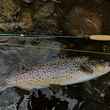
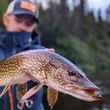





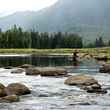
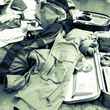



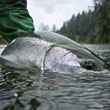
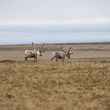



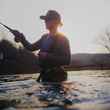
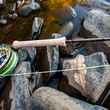



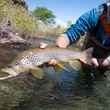
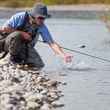



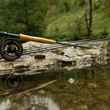
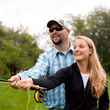
Comments